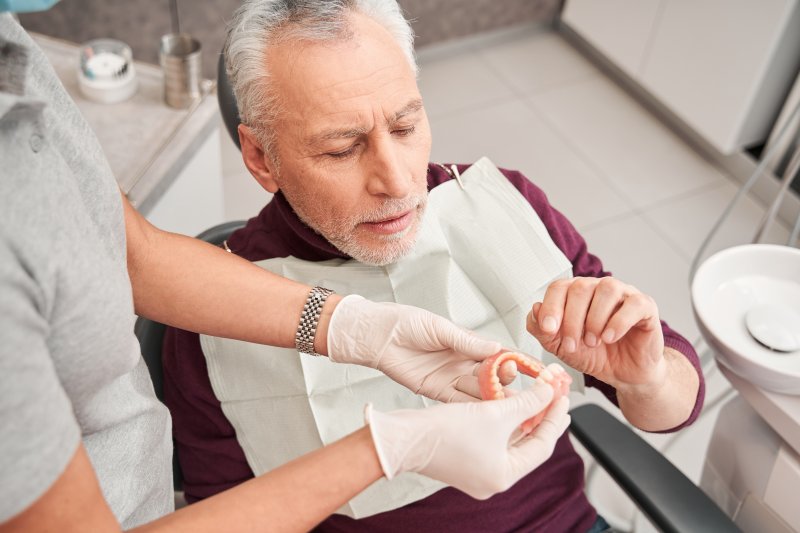
Dentures are a great tooth loss solution for those who are missing multiple, most of, or all of their teeth. Unlike old-timey dentures that your grandparents used to wear, modern dentures are customized for each patient, allowing them to look natural and fit perfectly, However, the mouth continues to change over time, so your prosthetic needs to be relined every few years. You can certainly do this by seeing your dentist, but what about on your own? Continue reading to learn more about this process and whether or not a DIY denture reline kit is a good idea.
Can You Reline Your Dentures at Home?
There seems to be a DIY kit for just about everything these days. However, is neither recommended nor advisable to attempt to reline your dentures on your own. A dental professional is best able to examine your unique situation and advise you accordingly. It is best to trust your dentist to help with the relining process. This way, you will be less likely to end up with damaged dentures that don’t fit properly. An ill-fitting denture can result in a variety of issues, including inflammation, irritation, and blisters in the mouth.
Why Do Dentures Need to Be Relined?
Dentures are customized to fit your smile perfectly. That’s why you had to go through the process of having impressions taken when you first got them. However, you might notice that after a few years, your dentures don’t quite fit how they used to. This isn’t because your dentures have changed. Instead, this is a result of your smile changing over time. When you are missing teeth, your jawbone is no longer being stimulated by the tooth roots, causing it to be reabsorbed by the body. Therefore, your dentures need to be altered. If you put off relining your dentures too long, you can end up with the following issues:
- Gum inflammation & irritation
- Blisters, cuts, & scrapes in the mouth
- Headaches & earaches due to abnormal jaw pressure
- Difficulty chewing, resulting in indigestion
- Jawbone atrophy
How Does Denture Relining Work?
Relining dentures involves adding new materials to the inside surface of a denture to improve how it fits in the mouth. Generally, the first step of a permanent reline is taking a thin impression inside your existing denture. Then, the denture is sent to the dental lab where acrylic material is used to fill in gaps where the gums have changed.
As opposed to a permanent denture reline, a soft denture reline is used when a patient has particularly sensitive tissue or excessive bone loss. This type of reline acts as a cushion to the denture, but it doesn’t tend to last as long.
Denture relines are needed from time to time, but it isn’t the best idea to attempt this process on your own. With the help of a dental professional, your denture will be fitting just like new again in no time!
About the Author
Dr. Aliana Henkin is an experienced dentist who has been working in the field for well over a decade. She earned her dental doctorate from the Rutgers School of Dental Medicine and has attended a variety of advanced courses in implantology, endodontics, BOTOX, dermal fillings, and CEREC. She is a proud Fellow of the International Dental Implant Association and a current member of the American Dental Association and New Jersey Dental Association. For more information on dentures or to schedule an appointment at Dr. Henkin’s office in Morristown, visit her website or call (862) 260-4116.
